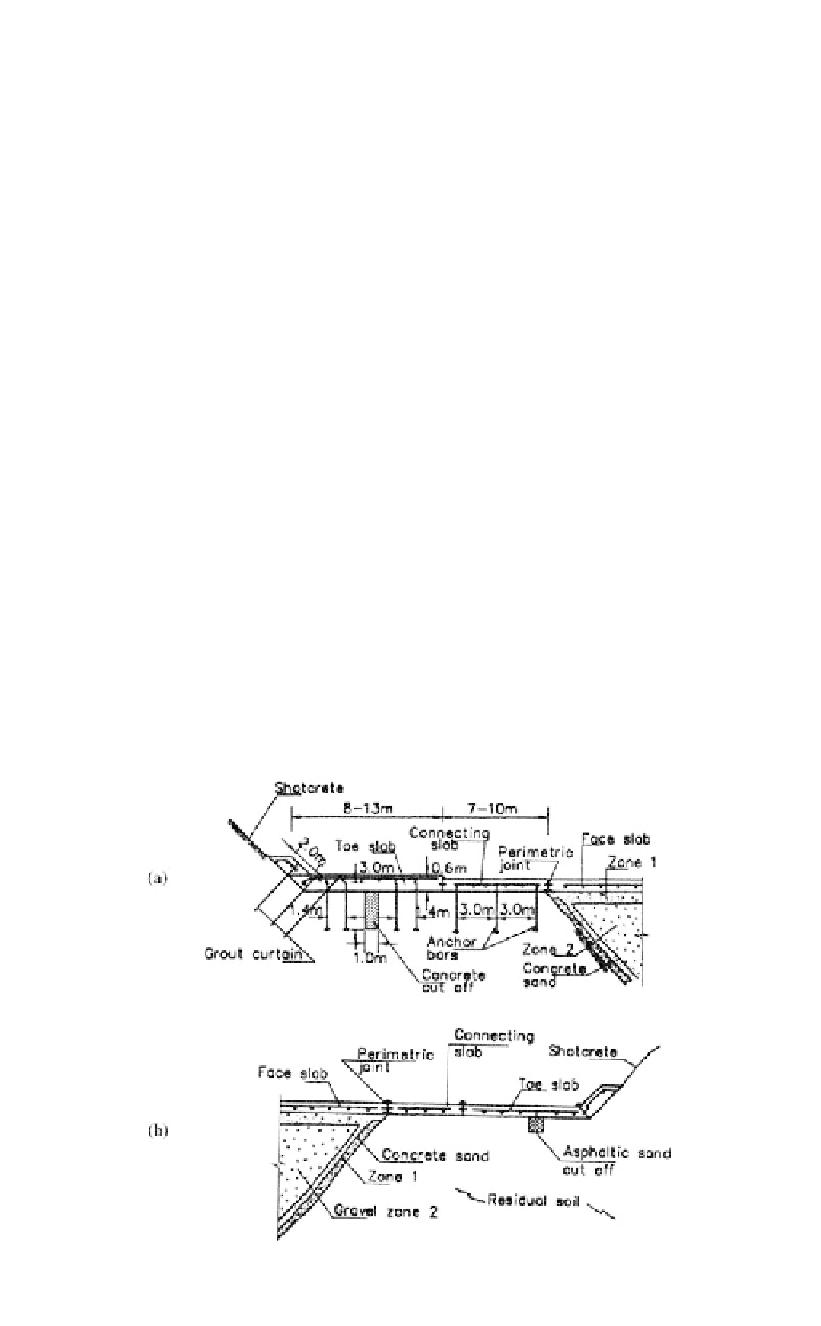Environmental Engineering Reference
In-Depth Information
This joint had opened as a result of settlement of the slab but poor concrete construction
appears to have been a contributing factor. As discussed in Section 15.5.5, the critical
issue was the absence of a free draining zone in the dam to discharge the leakage.
15.4
CONSTRUCTION ASPECTS
15.4.1
Plinth construction and special details
The methods of constructing the plinth are related to the topography and geology
(Materon and Mori, 2000). In wide valleys, e.g. Xingo, Foz do Areia, and Ita, plinth con-
struction can be established independent of embankment placement. In narrow and steep
valleys, e.g. Alto Anchicaya and Golillas, plinth excavation was simultaneous with the fill
construction.
It is desirable for the plinth to be founded on sound, non-erodible, groutable rock. In good
rock requiring blasting, excavation is commonly controlled by pre-splitting with holes at
0.6m spacing. Dental concrete is applied before anchor installation. In weathered rock
blasting should be minimized with excavation by machine or even by hand. Figure 15.25
illustrates design features for Salvajina Dam (Marulanda and Pinto, 2000) where special
foundation treatment included provision of a sand filter and gravel transition beneath the
upstream section of the embankment, consolidation grouting beneath the plinth, removal
of altered material to a depth of 3-4 times the seam width and backfill with concrete, pro-
tection of exposed slopes upstream of the plinth with steel reinforced shotcrete.
CFRD built on alluvium, e.g. Santa Juana and Puclaro in Chile and Punta Negra and
Los Caracoles in Argentina, involve the construction of an articulated plinth on com-
pacted gravel with joints protected by a transition filter. The plinth is connected to a con-
crete diaphragm wall taken through the alluvium.
Figure 15.26
shows the plinth and
cut-off wall at San Juana (Marulanda and Pinto, 2000).
Figure 15.25.
Foundation treatment and plinth design Salvajina Dam (Marulanda and Pinto, 2000).
(a) Plinth on less competent rock (b) Plinth on residual soil.

